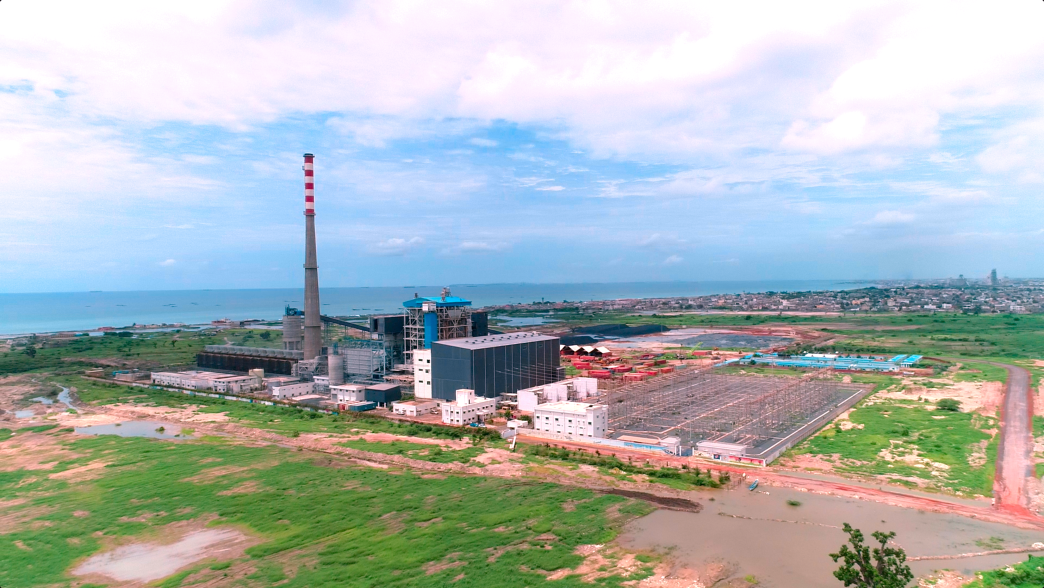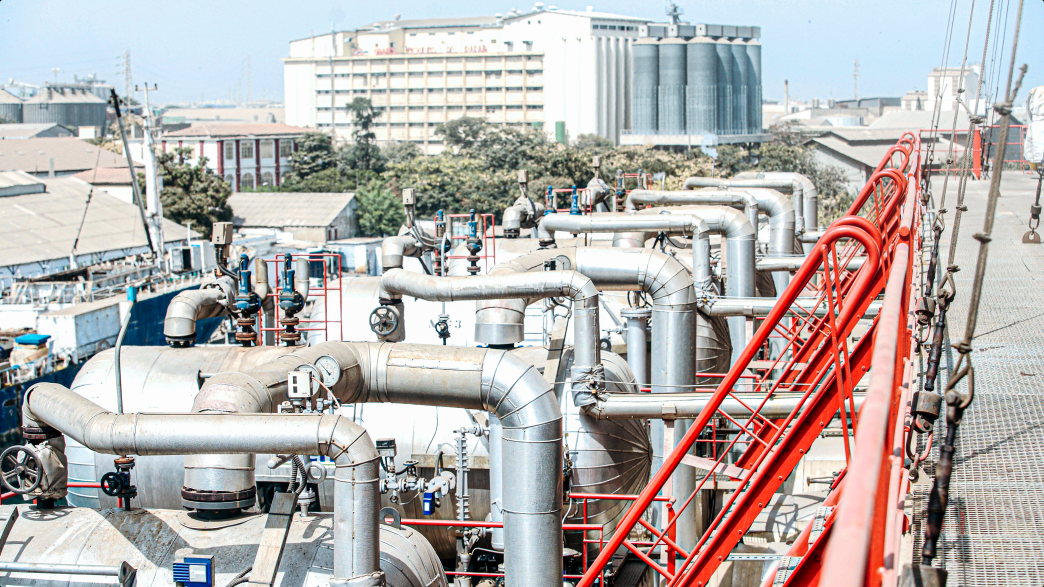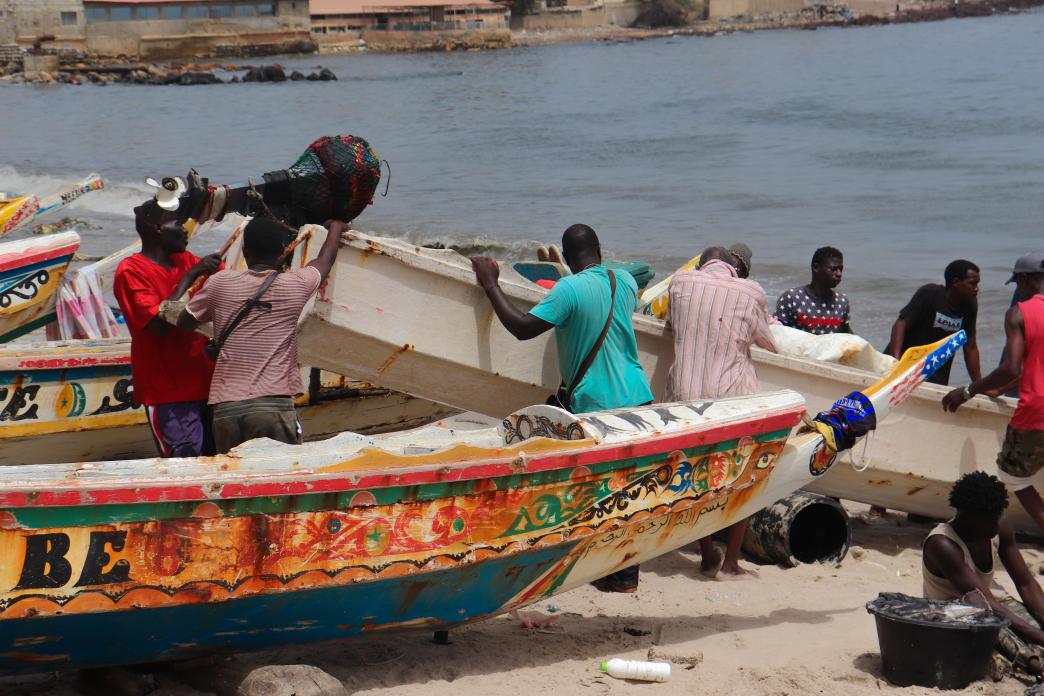
Why Senegal Should Minimize Petroleum Operations Emissions
Key messages
-
Slowing climate change is not the only reason Senegal should reduce greenhouse gas emissions. Minimizing emissions, particularly of methane, from the country’s oil and gas operations will increase government revenues, support its ambitions to use gas to increase domestic energy access, and reduce harms to the health and environment of local communities.
-
Senegal’s government is starting to act on minimizing emissions from oil and gas production, but officials should consider strengthening the regulatory framework to support emissions minimization.
-
Greater transparency and accountability, including effective campaigning by civil society actors, is critical to ensure effective action by companies, investors and the government. Measures to reduce oil and gas methane emissions have been well-known and cost-effective for many years, but progress in most countries has been slow.
-
Senegal’s government should at a minimum ensure that the existing regulatory framework is publicly accessible, while Senegal EITI should advocate for disclosure of actual emissions when oil and gas production starts.
Introduction
With large-scale oil and gas production likely to start within the next year, Senegal’s government has been working to finalize plans for management of the resulting revenues and domestic use of some gas.1 The development of Senegal's energy sector is also influenced by a context of global climate crisis and energy transition. Accordingly, Senegal has recently agreed a just energy transition partnership (JETP) with several development partners, which aims to increase power generation from renewables. Work has also begun on a low-carbon development strategy.2 Amid this activity, Senegalese society has overlooked a key issue: minimizings emissions from the country’s imminent oil and gas operations.
While most greenhouse gas emissions from oil and gas are generated when end users burn these fuels for energy, emissions from the production and distribution of oil and gas (here also called “operational emissions”) are also significant. Approximately 15-20 percent of global emissions come from the production, processing and transport of oil and gas.3
About half of the emissions from oil and gas operations are methane, a particularly potent greenhouse gas. (Much of the remainder is carbon dioxide generated from the burning of fuel for energy.4 ) Oil and gas companies release methane, the main component of gas, into the air by venting or flaring excess or unwanted gas, or by allowing it to leak from pipelines, liquified natural gas (LNG) facilities or other infrastructure.
Oil and gas operations contribute an estimated 23 percent of total methane emissions from human activity worldwide, and also account for an important share of Africa’s total emissions.5 Methane stays in the atmosphere for less time than carbon dioxide, but is 86 times more potent over a 20-year period.6 Fortunately, the actions needed to reduce oil and gas methane emissions are well-known and cost-effective.7
Africa’s current oil and gas operations on average generate more emissions per unit of fossil fuel produced than other regions, according to RMI’s OCI+ database.8 This is partly due to higher methane emissions.9 As Senegal develops its nascent oil and gas sector,10 the country’s stakeholders should be aware of this continental tendency.
Senegalese government officials, civil society actors and the wider public should pay careful attention to emissions from oil and gas operations because these emissions impact:
- Competitiveness of oil and gas projects
- Citizens’ energy access
- Government access to external financing for non-oil and gas purposes
- Economic benefits of capturing gas emitted during extraction/production
- Health and environment of local communities
- Reduction of the impacts of climate change on Senegalese citizens
Senegal’s government has shown increased interest in this issue. Alongside the development of a long-term low-carbon development strategy, it plans to develop a National Methane Roadmap (with support from the Climate and Clean Air Coalition).11 ,12 These are positive steps by the government and its partners and lay the foundation for further action in this area.
Appendices to Senegal’s 2019 petroleum code apparently address emissions minimization, but they are not in the public domain. Based on our understanding of the appendices’ provisions gained from discussions with various stakeholders, and the contents of the separate environmental code, several regulatory changes could be beneficial. For example, the environmental code prohibits the venting and flaring of gas. However, it is unclear what enforcement mechanisms, including to tackle leakages, regulations provide. These could include penalty fees for operators who emit methane. The government should consider including such a provision if one does not already exist. Requirements around company estimates and reporting of emissions also merit attention. For example, the government could consider requiring companies to share their methodology for computing these estimates. To address potential concerns around compliance with reporting requirements or unsubstantiated company disputes of government estimates, the government could apply the International Monetary Fund’s (IMF) innovative proposal to base methane fees on oil and gas production levels and assumed emission rate factors. The burden of proof to demonstrate lower emission rates than the default would fall on the companies; once they prove lower emissions, they would receive a rebate from the government.13 Senegal’s participation in the IMF’s newly established Resilience and Sustainability Facility (RSF) for climate mitigation should provide valuable financial and technical support to implement these and other measures.14
In parallel, civil society actors, academics and the broader public in Senegal should advocate for increased levels of government transparency and accountability, as these are required for more effective action to counter methane emissions.
Impacts of operational emissions from Senegal’s oil and gas projects
Competitiveness of oil and gas projects
Governments, investors and customers are all increasing pressure on oil and gas companies to reduce emissions not only from the use of their products but also their operations. Countries that currently impose carbon prices (i.e., a tax or fee on greenhouse gas emissions) have not yet applied them to emissions made during the production of imported oil and gas, but this may soon change. For example, the European Union, a prospective market for Senegalese gas, is considering adopting targets, standards or other incentives to reduce methane emissions from oil and gas imported into the EU.15 ,16 Such approaches, particularly if implemented in coordination with other key importers as the EU aims to do, would reduce the profitability of oil and gas projects with high operational emissions. In response to these possibilities and broader reputational risks, investors and customers (including Asia’s major LNG buyers) are pressuring oil and gas companies to clean up their acts by threatening to withhold business or investment.17 ,18 ,19
Future phases of Senegal’s projects currently appear cost competitive compared to many projects elsewhere. For example, Rystad Energy estimates that to be profitable the country’s future LNG projects need a long-term LNG price at the point of delivery in Asia of around USD 6-7 per mmBtu.20 However, as noted above, high operational emissions could change this, deterring investment in these projects and in other blocks offered in future licensing rounds.21 Less investment in the sector would mean lower government revenues and less gas for the domestic market. Lower investment could also tempt PETROSEN, Senegal’s national oil company, into making risky bets with public funds in projects that ultimately might not make any profit.22
Energy access
While the recently announced JETP should support a welcome increase in power generation from renewables, Senegal’s government is still likely to pursue a substantial expansion of gas-to-power generation to meet its energy goals. This plan requires a large amount of investment. However, potential investors in the infrastructure—for example, transport pipelines and power plants—will face pressure to reduce direct and indirect emissions in their portfolios. Public sector providers of funding are particularly likely to consider the government’s approach to emissions in the wider value chain.23 At a time when funding for gas-to-power infrastructure is already uncertain and competition for it is fierce, significant emissions from Senegal’s oil and gas production could therefore be a damaging blow to the country’s ambitions and its ability to achieve universal energy access.24 ,25
Access to external financing for non-oil and gas purposes
Emissions from oil and gas production may deter external financing for Senegal’s oil and gas projects throughout the value chain, but they may also reduce the country’s access to financing for other areas critical to sustainable development. Rigorous and transparent measures to tackle methane emissions, in particular, are becoming important for countries’ international credibility; for example, media outlets and watchdog organizations are naming and shaming “super emitters” and identifying “methane bombs.”26 In a potential sign of things to come, the IMF has faced a call to require rather than just encourage oil- and gas-producing countries to impose penalties on methane emitters as a condition for accessing loans from the RSF.27
Economic benefits of capturing gas emitted during extraction/production
Methane emissions from Senegal’s projects would also represent a wasted economic opportunity. The International Energy Agency estimates that the volume of methane that could be feasibly abated from oil and gas operations in sub-Saharan Africa is equivalent to around 14 percent of the region’s total gas production.28 This is gas that countries could export to generate additional government revenue or use domestically to increase energy access and industrial output. In Nigeria, for example, flared gas alone has exceeded gas supplied to the domestic market for much of the past two decades and cost the government around USD 1 billion in annual revenues (though the situation has improved recently).29 ,30
Local health and environment
The severe effects of greenhouse gas emissions on people’s health and the environment are well known. The impact on the health and environment of communities living close to sites of oil and gas extraction is also increasingly evident.31 ,32 Gas flaring in Nigeria, for example, has caused respiratory diseases and fever, along with other health issues, in children.33 It has also led to acid rain and heatwaves that have destroyed farmland and caused the extinction of flora and fauna.34 Current understanding of the local impact of emissions from offshore production is limited, though available evidence suggests dangerous particles can travel much further than previously thought.35 ,36 The Senegalese government, and broader society, should pay particular attention to the impact on the fisheries sector, given its importance to the livelihoods of many Senegalese.37
Climate impacts
Senegal does not bear primary responsibility for the climate crisis, which has been driven by wealthier, high-emitting countries while Senegal and many other African countries have suffered energy poverty. Countries with urgent development needs, like Senegal, should have priority when it comes to using the remainder of the world’s carbon budget.38 At the same time, Senegal is more vulnerable to climate change impacts than the average country. By one measure Senegal is the 37th most vulnerable of 185 countries assessed.39 Every additional ton of greenhouse gas in the atmosphere will worsen the climate crisis, and as Senegal works to implement its global climate commitments—and seeks financing for further mitigation and adaptation—Senegalese entities responsible for petroleum, energy, public finance, environment and climate must coordinate closely on objectives and policies.
Transparency and accountability are critical for minimizing emissions
While the actions needed to reduce oil and gas methane emissions have been well-known and cost-effective for many years, progress in most countries has been slow.40 Many companies have failed to take action and governments have often either failed to regulate or to enforce regulations they have enacted. Minimizing emissions from Senegalese oil and gas operations requires that a wide range of local, national and international actors hold companies, investors and the government accountable for progress.
Senegal’s parliament, civil society and research institutions have a critical role in scrutinizing existing and proposed regulatory measures, and monitoring and reporting on compliance once production starts. The media will be crucial in amplifying issues to increase public demand for improvements.
More transparency is needed to enable this accountability. At a minimum, the government should ensure that the current regulatory framework is publicly accessible and understood. As noted above, the appendices to the 2019 petroleum code that address emissions minimization are not currently in the public domain. The government could also use ongoing reforms, such as creation of its low-carbon development strategy, to communicate its future plans for reducing emissions from oil and gas operations. Similarly, officials should increase transparency around new regulatory measures. For example, the government could make company methodologies for estimating emissions publicly available as part of a requirement for companies to share them with the government.
Disclosure of actual emissions once production starts will also be important. Very little is known currently about likely levels of operational emissions due to the infancy of Senegal’s sector. Senegal Extractive Industries Transparency Initiative (EITI) has an important role to play in this area.41 NRGI and others have demanded that extractive companies improve public reporting of emissions, including making it more responsive to the needs of producer country governments and citizens rather than largely focused on investor needs.42 The new EITI Standard encourages companies to disclose their emissions, “[i]n in alignment with existing leading disclosure standards.”43 The EITI also encourages multi-stakeholder groups to request companies to disclose disaggregated data.44
Equally urgent alongside greater transparency is improvement in the capacity of the various actors mentioned above to effectively use disclosed information. Training and the building of coalitions can bridge the current gap, but donor support to these processes will be essential.
Conclusion
Stakeholders in Senegal are already working hard to reduce the country’s overall greenhouse gas emissions. However, minimizing emissions from oil and gas production, particularly methane, is an important component that requires more attention—not least because Senegal, as a new producer, has an advantage over established producers in developing new tools and procedures to limit these emissions.45 Senegal can draw on their experience, but should also implement legal, institutional and governance frameworks that minimize emissions from the start.46 In doing so, Senegal can achieve two crucial outcomes for limited additional cost: a greater contribution from oil and gas to the country’s sustainable development and a greater impact on climate change mitigation.
Acknowledgements
The authors wish to thank Aaron Sayne, Amir Shafaie and Patrick Heller of the Natural Resource Governance Institute for reviewing this brief. They also wish to thank EnergyCC’s Kathryn McPhail and Etienne Romsom for their invaluable expertise and input.
Notes
-
1
William Davis, Andrew Bauer, and Papa Daouda Diene, “Managing Senegal’s Oil and Gas Revenues” (Natural Resource Governance Institute, 14 December 2021), www.resourcegovernance.org/publications/managing-senegals-oil-and-gas-r….
-
2
Papa Daouda Diene and Thomas Scurfield, “Senegal’s New JETP: Four Crucial Next Steps,” Natural Resource Governance Institute (blog), 22 June 2023, www.resourcegovernance.org/articles/senegals-new-jetp-four-crucial-next….
-
3
African Natural Resources Management and Investment Centre, “Minimising Greenhouse Gas Emissions in the Petroleum Sector: The Opportunity for Emerging Producers” (African Development Bank, 2022), www.newproducersgroup.online/wp-content/uploads/2022/11/Minimising-Gree….
-
4
Chantal Beck et al., “The Future of Oil and Gas Is Now: How Companies Can Decarbonize,” McKinsey & Company, 7 January 2020, www.mckinsey.com/industries/oil-and-gas/our-insights/the-future-is-now-….
-
5
Carbon Limits AS, “Methane in Africa – A High-Level Assessment of Anthropogenic Methane Emissions in Africa with Case Studies on Potential Evolution and Abatement,” Text (African Development Bank, 5 November 2022), www.afdb.org/en/documents/methane-africa-high-level-assessment-anthropo….
-
6
“Homepage,” Global Methane Hub, 11 September 2023, www.globalmethanehub.org/.
-
7
IEA, “Global Methane Tracker 2023” (IEA, February 2023), www.iea.org/reports/global-methane-tracker-2023.
-
8
RMI, “Assessing Global Oil and Gas Emissions,” Oil Climate Index plus Gas, 2023, www.ociplus.rmi.org.
-
9
Based on available data from 2015 to 2022 on “Upstream Emissions Intensity (kgCO2eq/boe)” and “Upstream Methane Intensity (kgCH4/boe).”
-
10
There are three oil and gas projects in Senegal that are likely to start production in the immediate or near term: Grand Tortue Ahmeyim (GTA), Sangomar and Yakaar-Teranga. Sangomar has mainly oil reserves but contains some unassociated and associated gas (for an explanation see "Associated and Nonassociated Gas,” PetroWiki, accessed 11 September 2023, petrowiki.spe.org/Associated_and_nonassociated_gas)—the use of which is still being discussed by the government and companies, though reinjection is planned initially. GTA and Yaakar-Teranga are unassociated gas projects. The first phase of GTA will mainly produce liquefied natural gas (LNG) for export, as well as potentially supply some gas to the domestic market. The first phase of Yakaar Teranga is yet to reach a final investment decision (FID) but is expected to direct most if not all of its gas to the domestic market. (For an explanation of FID, see “FID,” Energy Insights by McKinsey, accessed 11 September 2023, www.mckinseyenergyinsights.com/resources/refinery-reference-desk/fid/).Until recently, this phase was expected to supply the domestic market only. But government statements suggest that some of its gas may now be exported as LNG – see Ed Reed, “BP Tipped to Reach next Senegal FID This Year,” Energy Voice, 27 January 2023, www.energyvoice.com/oilandgas/africa/lng-africa/478810/senegal-bp-lng-f….
-
11
“Senegal – Develop a National SLCP Plan and National Methane Roadmap [SN-23-001],” Climate & Clean Air Coalition, accessed 11 September 2023, www.ccacoalition.org/content/senegal-develop-national-slcp-plan-and-nat….
-
12
“Homepage,” Climate & Clean Air Coalition, 14 September 2023, www.ccacoalition.org.
-
13
Ian W. H. Parry et al., “How to Cut Methane Emissions,” Staff Climate Notes 2022, no. 008 (31 October 2022), doi.org/10.5089/9798400224256.066.A001.
-
14
“IMF Reaches Staff-Level Agreement with Senegal on an Extended Fund Facility (EFF) and Extended Credit Facility (ECF), Combined with the Resilience and Sustainability Facility (RSF),” IMF, 11 May 2023, www.imf.org/en/News/Articles/2023/05/11/pr23146-senegal-imf-reaches-sta….
-
15
Katarina Hoije, “Senegal Pitches Its Gas as European Option to Russia Supply - Bloomberg,” Bloomberg, 13 August 2022, www.bloomberg.com/news/articles/2022-08-12/senegal-pitches-its-gas-as-e….
-
16
European Commission, “Communication from the Commission to the European Parliament, the Council, the European Economic and Social Committee and the Committee of the Regions on an EU Strategy to Reduce Methane Emissions,” European Commission, 14 October 2020, www.eur-lex.europa.eu/legal-content/EN/TXT/HTML/?uri=CELEX:52020DC0663.
-
17
Maurice Berns et al., “How Institutional Investors See the Future of Oil and Gas,” BCG, 4 January 2022, www.bcg.com/publications/2022/how-investors-see-future-of-oil-gas.
-
18
Clara Tan, “Asia’s Major LNG Buyers Launch Methane Reduction Initiative,” Energy Intelligence, 18 July 2023, www.energyintel.com/00000189-6853-de6e-a5ef-f8ffffd90000.
-
19
In 2022, Asia was the destination of over 50 percent of west Africa’s gas exports by value. “Merchandise Trade Matrix in Thousands United States Dollars, Annual, 2016-2022,” UNCTADStat, accessed 4 September 2023, www.unctadstat.unctad.org/wds/TableViewer/tableView.aspx.
-
20
Rystad assumes a hurdle rate in nominal terms of 10 percent and an inflation rate of 2.5 percent.
-
21
Reed, “BP Tipped to Reach next Senegal FID This Year.”
-
22
David Manley and Patrick R. P. Heller, “Risky Bet: National Oil Companies in the Energy Transition” (Natural Resource Governance Institute, February 2021), www.resourcegovernance.org/sites/default/files/documents/risky-bet-nati….
-
23
“Guidance on Fossil Fuel Energy at the Multilateral Development Banks,” accessed 11 September 2023, www.home.treasury.gov/system/files/136/Fossil-Fuel-Energy-Guidance-for-….
-
24
IEA, “World Energy Investment 2023” (Paris: IEA), accessed 11 September 2023, www.iea.org/reports/world-energy-investment-2023.
-
25
Christine Juta, Julie Joly, and Langenbrunner Baird, “The Scramble for Africa’s Gas” (Global Energy Monitor, December 2022), www.globalenergymonitor.org/wp-content/uploads/2022/11/GEM-Scramble-for….
-
26
Damian Carrington, “Revealed: 1,000 Super-Emitting Methane Leaks Risk Triggering Climate Tipping Points,” The Guardian, 6 March 2023, www.theguardian.com/environment/2023/mar/06/revealed-1000-super-emittin….
-
27
John Hicklin, “Launching the RST: Country Policies Must Adapt—and So Too Must IMF Conditionality,” Center For Global Development, 21 February 2023, www.cgdev.org/blog/launching-rst-country-policies-must-adapt-and-so-too….
-
28
IEA, “Africa Energy Outlook 2022” (Paris: IEA Publications, May 2023), www.iea.org/reports/africa-energy-outlook-2022.
- 29
-
30
Camillus Eboh, “Nigerian Minister Says Plan to Commercialise Gas Flaring at Advanced Stage,” Reuters, 14 September 2022, www.reuters.com/world/africa/nigerian-minister-says-plan-commercialise-….
-
31
Esme Stallard, “Iraqi Minister Admits Gas Flaring Cancer Link,” BBC News, 17 October 2022, www.bbc.com/news/science-environment-63284896.
-
32
Etienne Romsom and Kathryn McPhail, Capturing Economic and Social Value from Hydrocarbon Gas Flaring: Evaluation of the Issues, 5th ed., vol. 2021, WIDER Working Paper (UNU-WIDER, 2021), www.doi.org/10.35188/UNU-WIDER/2021/939-6.
-
33
Omoniyi Babatunde Alimi and John Gibson, The Impact of Gas Flaring on Child Health in Nigeria, Policy Research Working Papers (The World Bank, 2022), www.doi.org/10.1596/1813-9450-10153.
-
34
John Kanayochukwu Nduka, Vincent Nwalieji Okafor, and Isaac Omoche Odiba, “Impact of Oil and Gas Activities on Acidity of Rain and Surface Water of Niger Delta, Nigeria: An Environmental and Public Health Review,” Journal of Environmental Protection 7, no. 4 (8 March 2016): 566–81, www.doi.org/10.4236/jep.2016.74051.
-
35
Tristan Baurick, “Satellites Can Now Catch Small but ‘nefarious’ Methane Emissions from Offshore Oil Platforms,” Nola, 22 September 2022, www.nola.com/news/environment/satellites-can-now-catch-small-but-nefari….
-
36
Ellen Gray and Karl Hille, “NASA Scientists Scrutinize Arctic Gas Flaring Pollution,” NASA, 26 April 2016, www.nasa.gov/feature/goddard/2016/nasa-scientists-scrutinize-arctic-gas….
-
37
Nathan Andrews et al., “Oil, Fisheries and Coastal Communities: A Review of Impacts on the Environment, Livelihoods, Space and Governance,” Energy Research & Social Science 75 (1 May 2021): 102009, www.doi.org/10.1016/j.erss.2021.102009.
-
38
Antonio Hill, “Equity and Good Governance Are Essential for the Energy Transition,” Natural Resource Governance Institute (blog), 28 March 2022, resourcegovernance.org/articles/equity-and-good-governance-are-essential-energy-transition.
-
39
“Rankings,” Notre Dame Global Adaptation Initiative, accessed 6 September 2023, gain.nd.edu/our-work/country-index/rankings/.
-
40
Fatih Birol, “COP28 Is a Moment of Truth for the Oil and Gas Industry’s Efforts on Climate - Commentary,” IEA, 13 May 2023, www.iea.org/commentaries/cop28-is-a-moment-of-truth-for-the-oil-and-gas….
-
41
“Page d’acceuil,” ITIE Initiative pour la Transparence dans les Industries Extractives du Sénégal, accessed 6 September 2023, www.itie.sn.
-
42
Daniel Kaufmann and Robert Pitman, “Extractive Company Disclosure of Project-Level Greenhouse Gas Emissions Is Critical,” Natural Resource Governance Institute (blog), 1 May 2023, resourcegovernance.org/articles/extractive-company-disclosure-project-level-greenhouse-gas-emissions-critical.
-
43
“EITI Standard 2023,” EITI, 24 June 2023, eiti.org/collections/eiti-standard.
-
44
“EITI Standard 2023.”
-
45
African Natural Resources Management and Investment Centre, “Minimising Greenhouse Gas Emissions in the Petroleum Sector.”
-
46
African Natural Resources Management and Investment Centre.





